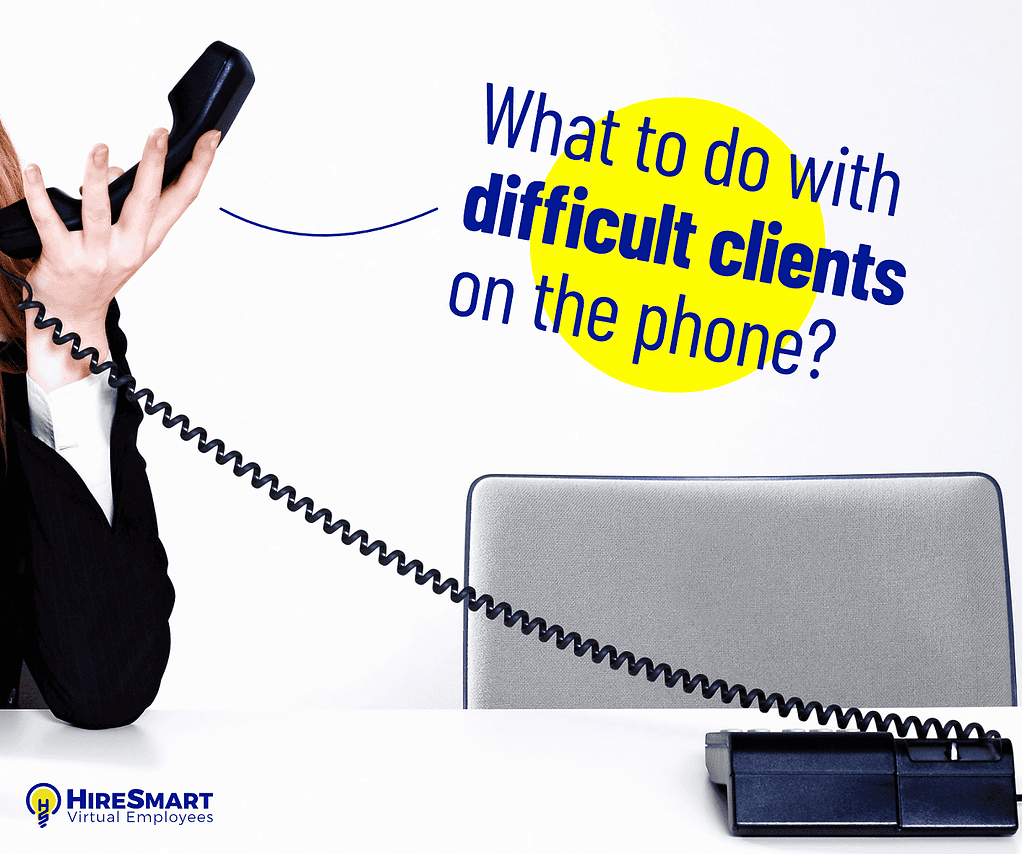Aren’t we all wondering what to do with difficult clients? They are the customers whose calls we try to avoid at work. They scrutinize our service to the littlest detail and find faults with anything and can make working hell for us. And no matter how excellent your customer service is, they are unhappy and ungrateful people that we have to deal with. As much as we want to elude them, they are the main source of where we earn our living and so we have to learn how to deal with them. Unfortunately, when it comes to handling people, there is no straightforward solution. It takes deep understanding, listening and empathy and fortunately for us, there is a guide to get us started.
Just like any problem, you’d have to identify the source and resolve the issue from there. Before we outline the techniques, it may be worth to take a look at the possible reasons why you have a difficult customer in the first place:
- They felt they are not being listened to. Just because you have been doing your job for the past 10 years and can already guess the customer’s concern just from the first 3 words of their opening statement, does not mean you can interrupt them and give what you think is the perfect solution immediately. While it is appreciated that you are saving the customer some time by not letting them finish, it can be very annoying. Not everyone who has a complaint needs a solution. Sometimes, they could be calling to have someone listen to them. Or maybe you thought you know what the concern is all about until you’ve listened to the entire complaint. Nothing is more annoying than being upset and having to repeat oneself.
- They have failed expectations. When we promise them something, like 5mbps internet speed and the customer only gets 3mbps or when we promise that there is no annual fee, yet they got charged, you can understand how that can be frustrating. They are paying customers, and so they expect things to be delivered just as promised.
- They are confused or overwhelmed. This is somehow related to point #2. The caller felt that they have expectations that were not met. They can be right, or they could have just failed to read the fine print which made them think they’re right. Either way, they are still paying customers that you need to address.
- They had a bad customer service experience before you. It may not be because of you that they are already shouting at the onset of the call. It may be because the previous representative from your organization who they dealt with did a poor service to them.
- They had a bad day. Just like everyone else, we tend to be short tempered or negative when our day did not go as we planned. Regardless of how excellent you are in customer service, if the customer you are dealing with is going through the worst divorce, whatever you do to him is annoying and can be a reason to be irate.
Going through our list above, none of the reasons indicate that it’s you personally that they are upset with. You happen to represent the organization to which they are having a complaint with so don’t take it personally. What do we do when we encounter difficult customers then?
A. Stay Calm and Listen. When a customer starts a conversation yelling at you, NEVER yell back. Again, they are not yelling at YOU but at the organization who you are working for. Maintain a calm and professional tone. Acknowledge to the customer that you’ve understood his concern after he has finished his rants. Do not interrupt even though you already know the issue is.
B. Acknowledge but don’t agree. To acknowledge is to let the customer know you understand his complaint but agreeing is adding fuel to the fire. Instead, have control of the conversation by shifting it towards a resolution.
C. Apologize when necessary. We apologize because we think it’s an easier way out of a mess but that’s wrong. An apology without a proper resolution is useless and customers are tired of hearing the usual “I am sorry to hear that” as it’s so scripted and completely not what they were looking for. In cases where it’s no one’s fault, it is best to acknowledge the customer’s issue and provide a resolution rather than apologizing immediately.
Only promise what you can attain. At this point, you don’t need to create another reason for the customer to be more upset. Do not say you will get back to him tomorrow when you are not sure if the problem will be resolved tomorrow. Do not say he will get refunded when you still need to get the approval from the manager. Set the right expectations with him while making him aware that what you are giving him is the best resolution for the moment. Give him a follow-up call when you can even though the problem has not yet been resolved just for him to know that you are working on it and you are taking the problem seriously.



